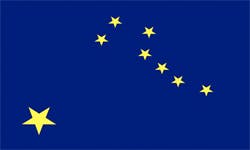Although Medicare Advantage (MA) launched in 2006, there are still no Medicare Advantage plans in Alaska. However, the private insurance companies who provide these plans change their offerings every year. This means that Alaska could see its first Advantage plans soon, particularly in more populous cities like Anchorage and Juneau.
To help you prepare for that day, this page explains how Medicare Advantage works.
What is Medicare Advantage?
Medicare Advantage plans (also known as Medicare Part C) provide the same benefits you get with Original Medicare. This includes Medicare Part A, which covers inpatient services received in a hospital or skilled nursing facility (SNF), and Medicare Part B, which covers outpatient services. These include doctor visits, lab work, durable medical equipment (DME), and more. For prescription drug coverage, you need Medicare Part D.
Most MA plans also offer additional coverage. One common add-on is prescription drug coverage, available in about 90 percent of Medicare Advantage plans. These all-in-one policies are called Medicare Advantage Prescription Drug plans (MA-PD).
Other common additional benefits include:
- Routine vision care
- Routine dental care
- Hearing aids
- Fitness programs
Is Medicare Advantage available in Alaska?
No, there are no Medicare Advantage plans in Alaska. If you qualify for Medicare, you are limited to Part A, hospital insurance, and Part B, medical insurance. Luckily, Medicare beneficiaries can visit any provider who accepts Medicare, no referral necessary.
There are other types of Medicare plans available in Alaska. For prescription drug coverage, you can add a Medicare Part D plan to your Parts A and B benefits. And, to help cover some of your out-of-pocket costs under Original Medicare, you can also buy a Medicare Supplement plan (commonly known as Medigap).
Types of Medicare Advantages plans
There are four main types of Medicare Advantage plans. They are:
- Health maintenance organizations: HMOs are the most popular option. These plans include a provider network of doctors, labs, hospitals, clinics, and more. Unless it's an emergency, most HMO plans won't pay for care received from an out-of-network provider.
- Preferred provider organization: PPOs use provider networks that are similar to HMOs. However, they allow members to visit an out-of-network provider for a higher out-of-pocket cost.
- Private Fee-for-Service: PFFS plans control costs by setting the price point for services. Anything a provider charges above that price point is payable by the plan's members. Like PPOs, PFFS plans allow you to see an out-of-network provider if you're willing to pay more.
- Special needs plans: SNPs limit membership to people who meet the plan's guidelines. This typically means having a chronic health condition like diabetes or heart disease, living in an institution like a nursing home, or being eligible for both Medicare and Medicaid.
How to compare Medicare Advantage plans in Alaska
When comparing Medicare Advantage plans in Alaska, you should look at three metrics: Costs, coverage, and provider network.
How much does the plan cost?
Like Original Medicare, Advantage plans employ a cost-sharing model that may include a yearly deductible, monthly premium, and coinsurance or copayments. You need to look at each of these metrics to understand the true cost of the plan.
Since private insurance companies offer Medicare Advantage plans, costs can vary widely. Please note that, even if your MA plan has a monthly premium, you will still be responsible for paying the Medicare Part B premium.
What does the plan cover?
Just as costs vary from plan to plan, so too do benefits. And some Medicare Advantage plans have a wide array of additional coverage that you don't get with Original Medicare. Even if the plan has a monthly premium, you could save money if it covers prescriptions or routine vision and dental care, since you won't have to buy separate policies or pay out-of-pocket for those services.
If it's a Medicare Advantage Prescription Drug plan, you also need to look at the drug formulary to be sure it covers your prescriptions. You cannot add a standalone Part D plan to an MA-PD plan.
Reviewing both the benefits and costs together ensures you're comparing apples to apples.
How good is the provider network?
Provider networks basically include any entity that provides healthcare services. In addition to the obvious – doctors and nurse practitioners – networks may include:
- Hospitals
- Labs
- Clinics and urgent care centers
- Durable medical equipment providers
- Nursing homes
- Pharmacies
The main reason Alaska does not have any Medicare Advantage plans is that individual counties do not have enough of both Medicare beneficiaries and providers to create these complex networks. Once that changes, Alaskans should start seeing Advantage plans.
How to choose a Medicare plan in Alaska
Our Find a Plan tool makes comparing Medicare plans in Alaska easy. Enter your location information (zip code and county) and estimated coverage start date to review the Medicare plan options in your area.
